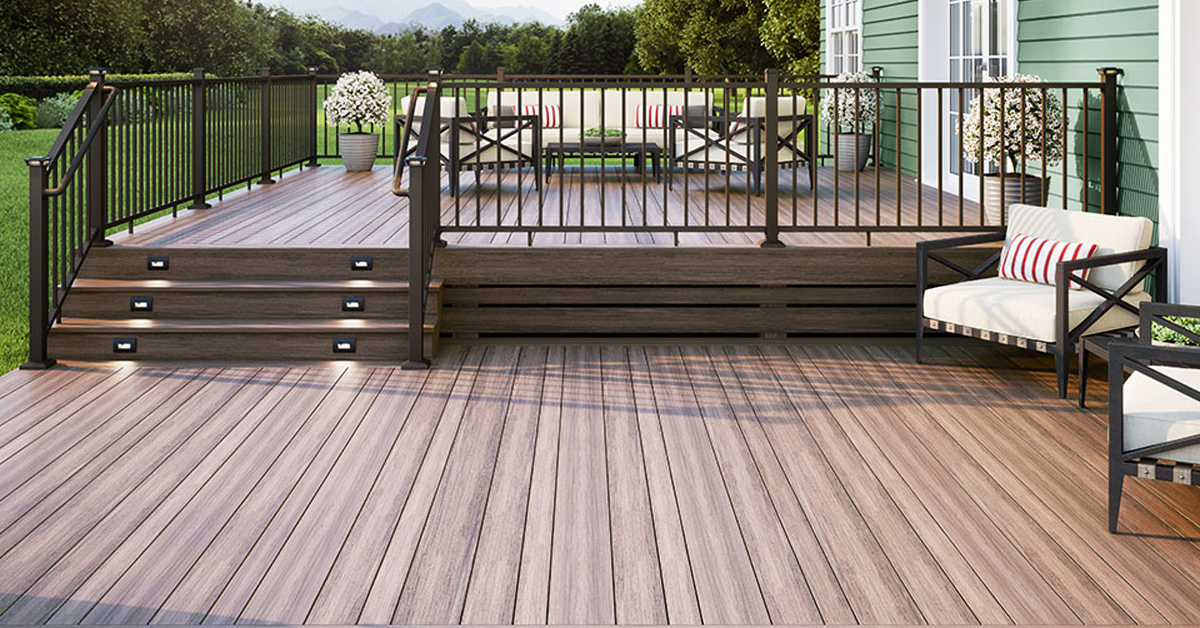
Decks are a beautiful addition to any home, providing a space for outdoor relaxation, gatherings, and enjoyment of nature. Over time, however, exposure to the elements can cause decks to wear down. Sun, rain, snow, and foot traffic can lead to discoloration, rotting, and splinters. This is where deck resurfacing comes into play – an affordable and efficient way to restore your deck to its former glory.
What is Deck Resurfacing?
Deck resurfacing involves replacing the top layer of your deck’s surface without tearing down the entire structure. Instead of removing and rebuilding your deck, resurfacing gives your old deck a fresh new appearance and functionality. It’s a cost-effective way to extend the life of your deck, increase its aesthetic appeal, and make it safer to use.
Benefits of Deck Resurfacing
1. Cost-Effective
Compared to a full deck replacement, resurfacing is a much more affordable option. The cost of resurfacing depends on the size and condition of your deck, but it’s typically a fraction of the price of tearing down and rebuilding your deck from scratch. The materials used in resurfacing can also be more budget-friendly than new decking materials.
2. Time-Saving
Deck resurfacing can typically be completed in a fraction of the time it would take to replace the deck. Instead of waiting for weeks or months to build a new deck, resurfacing can restore your deck in just a few days. This means you can get back to enjoying your outdoor space much sooner.
3. Enhanced Aesthetics
Deck resurfacing can dramatically improve the look of your deck. Whether you’re simply replacing worn-out planks or giving your deck a complete makeover with a new color or material, resurfacing provides a fresh and clean appearance. Modern composite materials, such as Trex or TimberTech, offer durability and a range of design options that can elevate the look of your outdoor space.
4. Increased Safety
Worn-out, cracked, or splintering wood can pose safety hazards. Resurfacing addresses these issues by replacing damaged sections and creating a smoother, safer surface for walking, sitting, and entertaining. This is especially important for families with young children or pets.
5. Eco-Friendly
If the structure of your deck is still solid, resurfacing is a more environmentally friendly option than demolition and disposal of the old deck. Many resurfacing materials, such as composite decking, are made from recycled materials, further reducing the environmental impact.
When to Consider Deck Resurfacing
Deck resurfacing is a great option when:
-
Your deck’s surface is cracked, splintering, or showing signs of wear, but the underlying structure (beams, posts, and supports) is still in good condition.
-
You want to update the look of your deck without going through the hassle and expense of a full replacement.
-
You notice water pooling on your deck or if it has become slippery over time.
-
You want to increase the longevity of your deck without dealing with the cost and mess of a complete rebuild.
However, if the frame of your deck is severely damaged, has rot, or is unstable, it’s best to consider replacing the entire deck.
The Deck Resurfacing Process
1. Inspection and Preparation
Before starting the resurfacing process, a thorough inspection of your deck is essential. Check the structural integrity of the framework. Any rotting beams or posts need to be repaired or replaced. Once the inspection is complete, the old deck surface must be cleaned, and any nails or screws that have come loose should be replaced.
2. Selecting the Material
After preparing the surface, you’ll need to choose the materials for resurfacing. You can opt for traditional wood, composite decking, or PVC. Composite and PVC decking are low-maintenance, resistant to rot, and come in various styles and colors.
3. Installation of New Decking
The new decking is installed over the existing structure. This usually involves laying down new planks, securing them with screws, and making sure everything is level. Depending on the material used, you may need to apply sealant or stain to protect the surface from the elements.
4. Finishing Touches
Once the new decking is in place, finishing touches like railing installation, power washing, and sealing will complete the job. If you’ve chosen a wood deck, staining and sealing will help protect it from the sun and moisture.
Conclusion
Deck resurfacing is an excellent way to breathe new life into your outdoor space without the hassle and cost of a full replacement. It’s quick, affordable, and offers significant improvements in safety, appearance, and functionality. Whether you’re looking to refresh your deck’s look or extend its lifespan, resurfacing is a smart investment that will enhance the enjoyment of your outdoor living area for years to come.